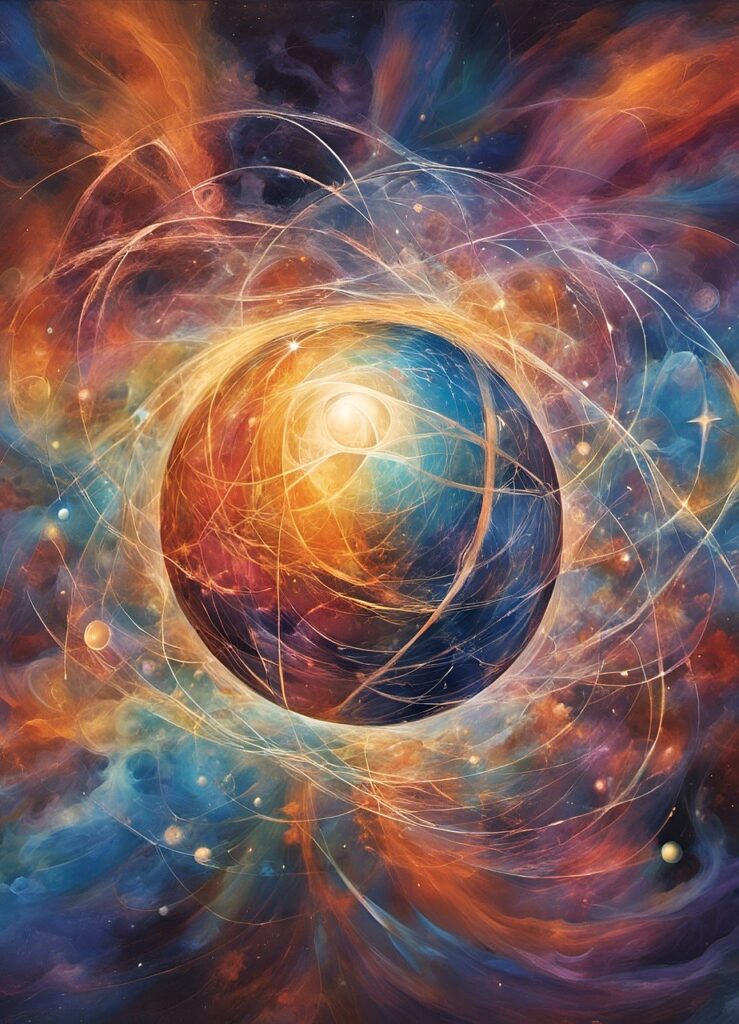The internet is a good example of interconnectedness. We can understand how it is connected from one country to the next, one city to the next, one home to the next, one room to the next. With apps like Netflix or Youtube we can watch a movie across any of our devices, stopping on one and picking up on another, because they are interconnected..
But interconnectedness is bigger than even the internet, it is present in every instance, every moment, from the smallest particle, to the expanse of the entire universe, and every little piece in between. Interconnectedness then, is the state of being connected with each other. It encompasses the interconnectedness of all things in the universe.
“We cannot live only for ourselves. A thousand fibers connect us with our fellow men; and among those fibers, as sympathetic threads, our actions run as causes, and they come back to us as effects” — Henry Melvill (1855)
It can often be said that many of the topics I write on here about the human condition and human connection are connected, because they are. But it isn’t by happenstance that they are connected – it is design.


I first came into contact with the idea of interconnectedness, or interdependence, through Buddhist teachings. I want to plug a great podcast here, it’s called Secular Buddhism, with Noah Rasheta, which is based around the dalai lama quote, — ‘Do not try to use what you learn from Buddhism to be a Buddhist; use it to be a better whatever-you-already-are.’ And I really love this quote because I think that’s what I’m doing here – I’m touching on all these amazing topics and tools, but I don’t want you to become me, I want you to take all these topics and tuck them into the toolbox you already have from your interconnected life, and then pull them out to use them when they fit for you.
Buddhism holds that human beings, far from being isolated entities, are part of a larger, symbiotic fabric of coexistence, where “because this exists, so does that; because that exists, so does this.”
As taken from the First Nations Pedagogy website:
Interconnection is a central core of First Nations, Inuit and Metis worldviews and ways of knowing. Some First Nations sum this up with the phrase “All my relations”. This mindset reflects people who are aware that everything in the universe is connected. It also reinforces that everyone and everything has a purpose, is worthy of respect and caring, and has a place in the grand scheme of life.
First Nations relationships fully embrace the notion that people and their families are strongly connected to the communities they live in, their ancestors and future descendants, the land they live on, and all of the plant, animal and other creatures that live upon it. They know they are stewards of the Earth and have traditionally lived in harmony with their environment for millennia. Their traditional practices boast amazing sustainability, ecological awareness and knowledge, and a strong scientific understanding of the earth, weather, cycles of the seasons, medicinal and food sources, marine foods and harvesting, and creating everything they need from nature’s bounty. Before colonization, these practices and systems worked perfectly and in harmony with the world around them. They left a very light footprint upon the earth.
I think this is what we all strive for, deep down, is that connection with all that is around us. We want community and a sense of belonging in the greater world around us.
So what happens when we lose our sense of interconnectedness? When individuals cannot grasp or appreciate their connections with others, it gives rise to a sense of isolation, mistrust, hostility or apathy. We thrive in community and suffer in isolation.
Community building is a huge part of maintaining a healthy connection to one another and the interconnectedness of all things. Without one another we cannot survive. I believe this answers the question of why we are so interconnected.
“United we stand, divided we fall,” — Aesop
There is a fable about a bundle of sticks. A father who sees his sons quarrelling with one another brings to them a bundle of sticks. He asks each one to attempt to break the bundle in half, but none can do it, then he gives them each a single stick and again asks them to break it, which of course this time they can. He says it is an analogy for their lives — if they remain united they will be impossible for their enemies to break, like the bundle, but if they are divided among themselves, they will be no stronger than a single stick alone.
This is a wonderful way to demonstrate the strength of interconnectedness in community. We are only as strong as we are together. We see this play out in so many places, from good — like community coming together to tackle a problem, to bad, warring nations. But it is rare that one person can enact change on their own, we must always see the community behind them.
If you’re feeling isolated and searching for connection, please reach out for a free 30 minute discovery call. You are not alone. I’d love to help you reconnect with your community.
Subscribe to get the latest posts sent to your email.
Copyright © 2024 by Rev. Stephen B Henry PhD.
All rights reserved.
Another Website by Ultimate Virtual Solutions
Design • Content • SEO